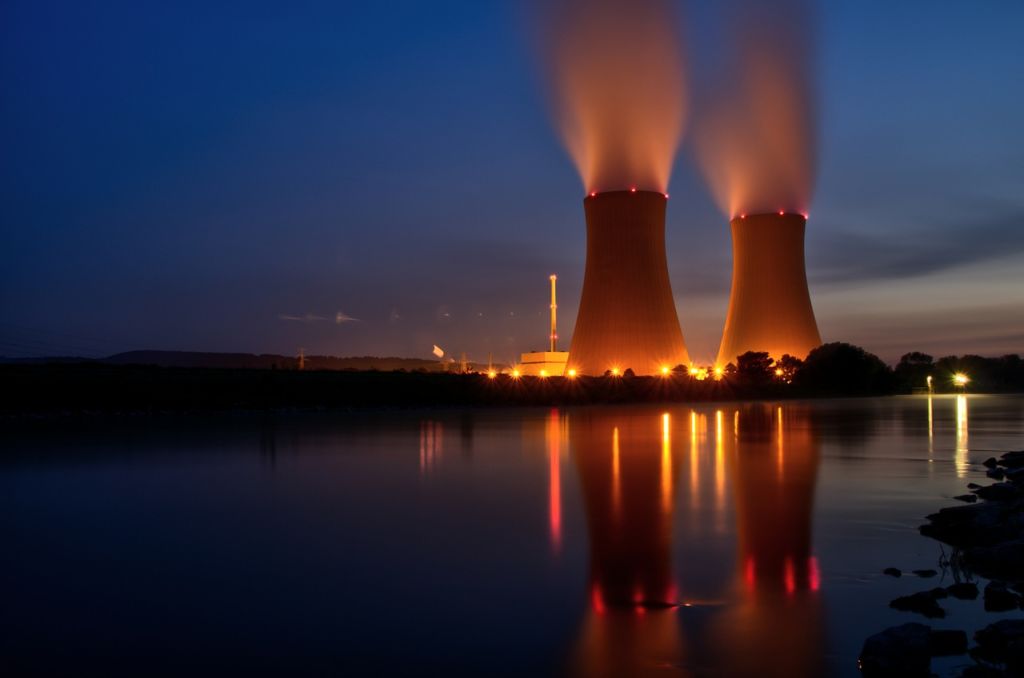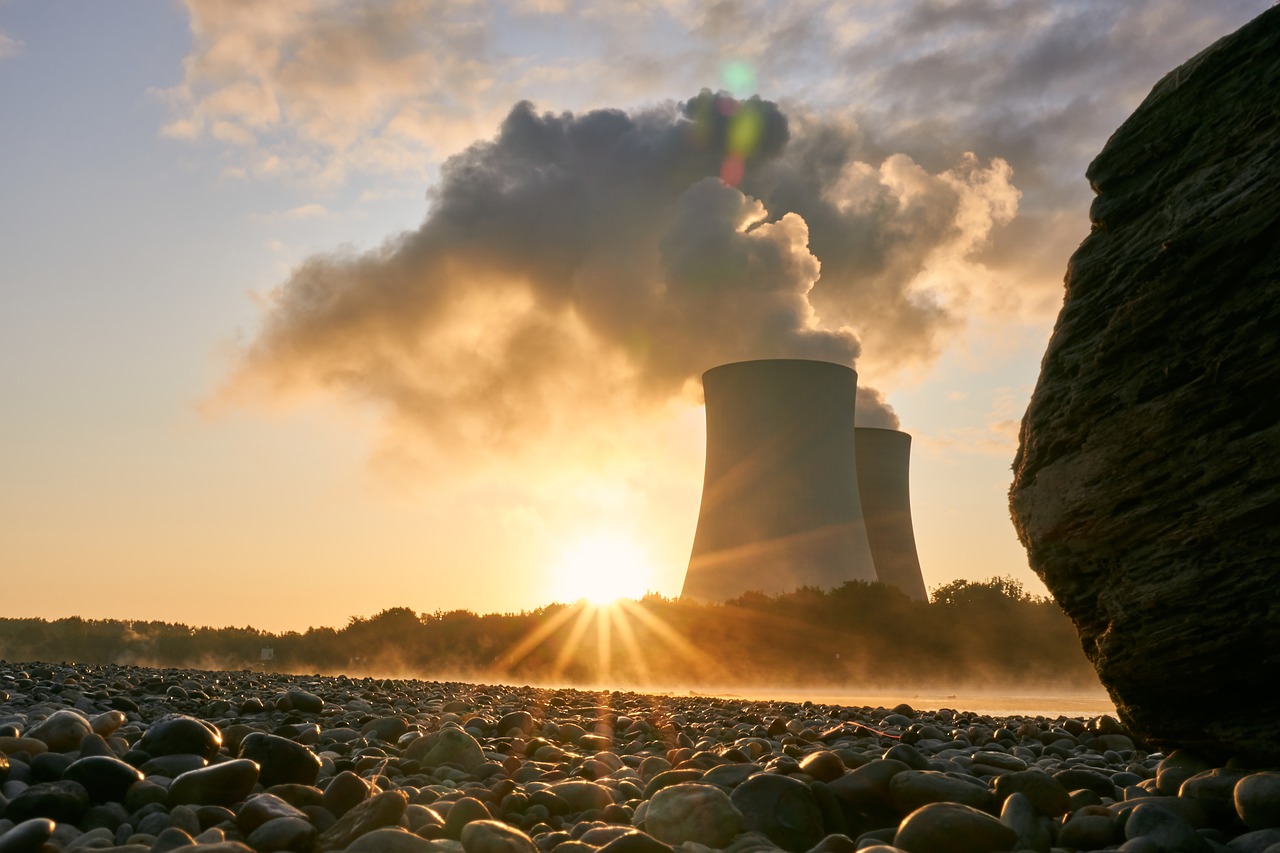For 60 years, America’s nuclear power industry has been quietly working away in the background, providing the nation with reliable, carbon-free energy. Today in the United States, nuclear plants generate around 20% of the electricity people use. In this article, I present a look at the current landscape of the US nuclear power industry.
The US has 98 nuclear reactors operating in 30 states.
Nuclear power is an extremely reliable energy source. Since 2001, America’s nuclear power plants have generated around 807 Terawatt-hours (TWh) per year.
In the 1970s, the average capacity factor of the US nuclear industry was around 50%. This figure rose to 70% in the early 1990s and passed 90% in 2002. Capacity refers to the maximum amount of power a plant can produce; capacity factor describes the actual output of a power plant over time. In other words, capacity factor measures how often a plant is running at maximum power—a plant with a 100% capacity factor is producing maximum power all the time. The nuclear power industry’s high average capacity factor is an indication of its consistency and reliability.

In 2018, nuclear’s average capacity factor rose to a record 92.6%. By contrast, in the same year, wind power achieved an average capacity factor of just 34.7%. Though coal is often considered the “workhorse” of the power industry, its average capacity factor that year was just 54%.
Most US nuclear energy is generated by reactors built between 1967 and 1990.
Approximately half of the country’s nuclear generating capacity is more than 30 years old. Its transmission infrastructure is also aging. The good news is that officials increasingly recognize the impending energy crisis and acknowledge the benefits of nuclear power in reducing carbon emissions and providing reliable power.
Nuclear reactors generate energy by splitting uranium atoms.
Within a nuclear reactor, uranium atoms are split in a process known as nuclear fission. The nucleus of an atom is held together by a massive amount of force. The nucleus comprises protons and neutrons packed together densely.
Different elements contain different numbers of protons and neutrons. For example, the heaviest element, uranium, contains 92 protons, whereas the lightest element, hydrogen, contains just one proton.
A uranium atom is large, and the force holding it together is relatively weak. This makes uranium atoms easier to split than other atoms and is one of the main reasons why nuclear power plants use uranium fuel.
A nuclear reactor bombards uranium atoms with neutrons to split them. As the atom splits, it releases more neutrons, which in turn collide with other uranium atoms, initiating a chain reaction. The process also requires the presence of a moderator, typically graphite or water.
Scientists use boron rods to control the chain reactions. Boron is non-fissile, meaning it will not react when bombarded with neutrons. Instead, boron absorbs the neutrons, slowing down the chain reaction.
A huge amount of energy is released as the atoms split. In a boiling water nuclear reactor, the heat from that energy turns water in a boiler into steam. The steam drives turbine generators, like those found in fossil fuel power plants, that produce electricity. In a pressurized water reactor, the heated water is kept under pressure, so that it does not turn into steam. This hot radioactive water flows through tubes inside a steam generator, heating clean, non-radioactive water to produce steam. The steam powers turbine generators to create electricity. In the US, most reactors are either boiling water or pressurized water reactors.

The United States is the world’s largest nuclear energy producer.
In terms of the total amount of power produced, the top 10 nuclear energy producing countries are: the United States, France, Russia, South Korea, Germany, China, Canada, Ukraine, United Kingdom, and Sweden.
The top 10 list looks different when countries are ranked by the share of their total energy produced by nuclear power: France, Slovakia, Ukraine, Hungary, Sweden, Belgium, Switzerland, Slovenia, Bulgaria, and Czech Republic. The US ranks 15th on this list.
America’s largest nuclear power plant is the Palo Verde Nuclear Generating Station.
Located near the Gila River in western Arizona, this power station has an average electric power output of around 3 gigawatts (GW).
The Palo Verde Nuclear Generating Station serves around 4 million people. The plant utilizes treated sewage water from nearby towns to cool the steam it produces. The Arizona Public Service Company is the station’s biggest shareholder.
America’s next largest nuclear plant is Browns Ferry, located in Alabama, along the Tennessee River. Named after the ferry that operated nearby until the mid-20th century, Browns Ferry was the biggest nuclear power plant in the world when it was established in 1974. It is owned by the Tennessee Valley Authority (TVA).
The third biggest nuclear power plant in the United States is the South Texas Nuclear Generating Station. Located near the Colorado River and Bay City, Texas, the plant occupies around 12,000 acres and includes two pressurized nuclear reactors. The plant relies on a local reservoir to cool steam, removing the need for cooling towers.
Nuclear power is the most reliable source of carbon-free energy.
Nuclear energy does not produce carbon or other greenhouse gasses that are causing climate change. It is widely regarded by experts as a safe, reliable solution for an energy industry that is in flux. We must transition away from coal and other fossil fuels if we want to prevent the worst effects of climate change. Wind and solar power will be important in helping America achieve its low-carbon energy goals, but these renewables simply can’t match the consistency and reliability of nuclear power.
The takeaway
Nuclear power is consistent and reliable, and it produces no greenhouse gasses. Given all these benefits and the industry’s robust safety culture, the nuclear industry can power America through the 21st century and beyond.
